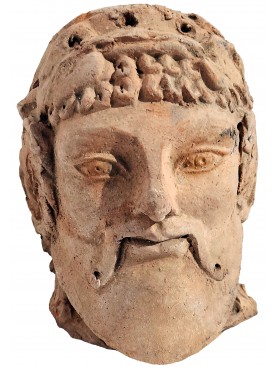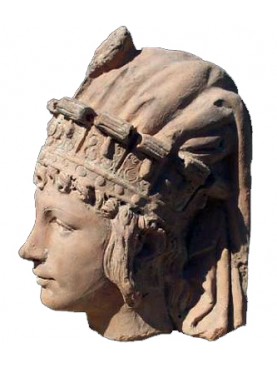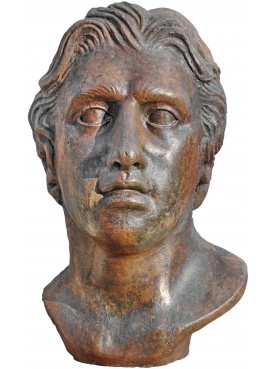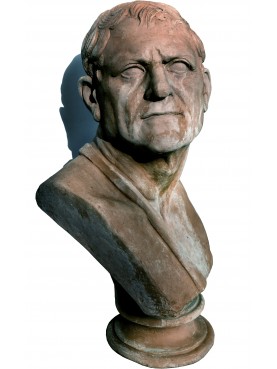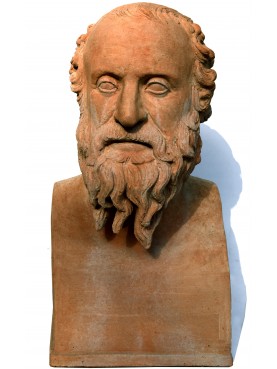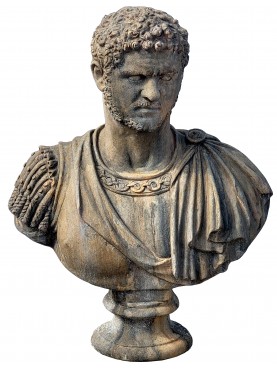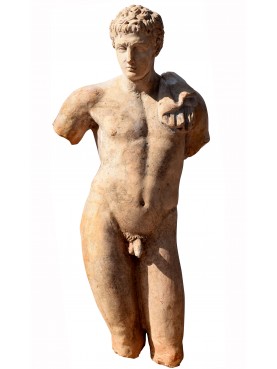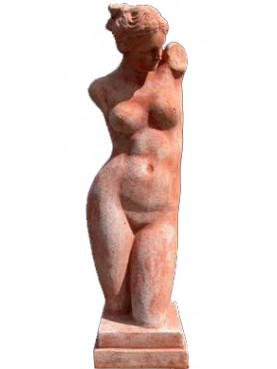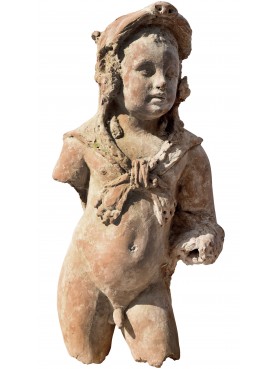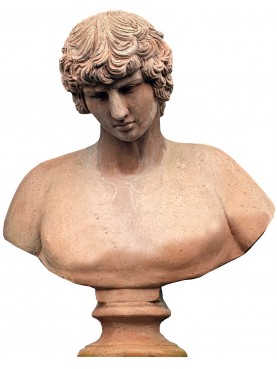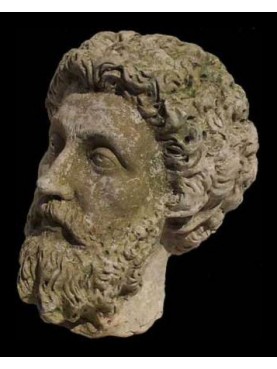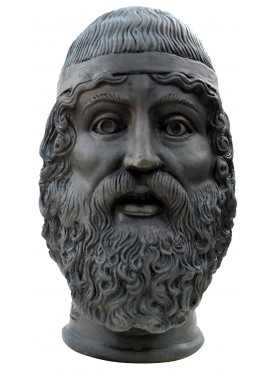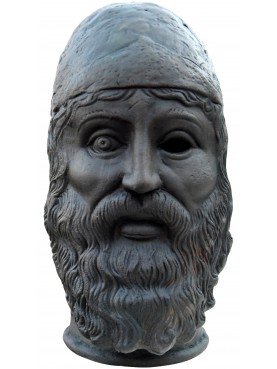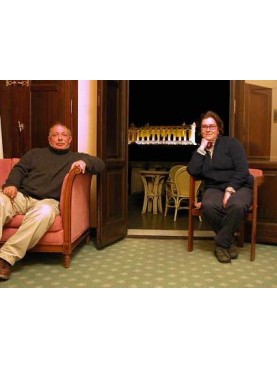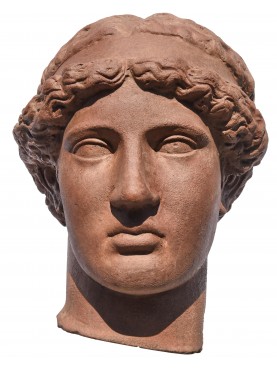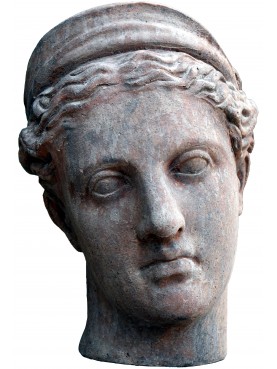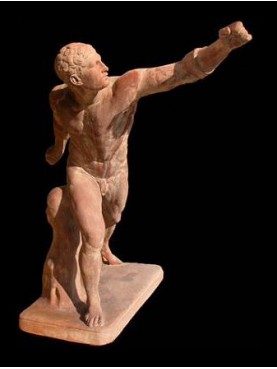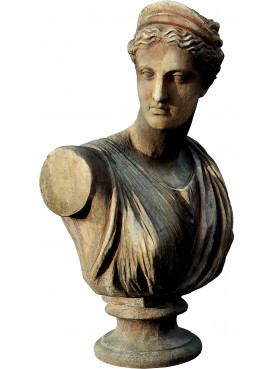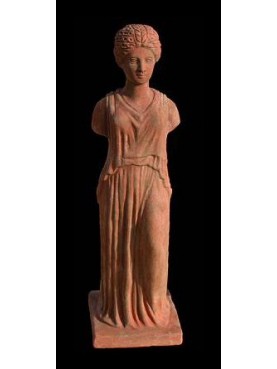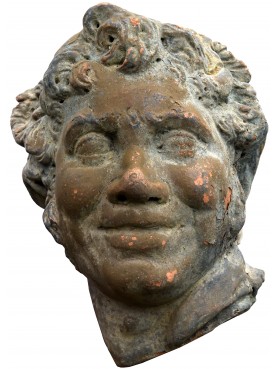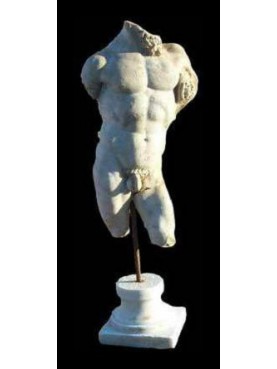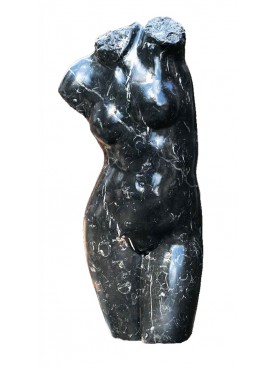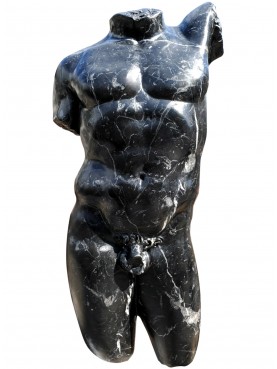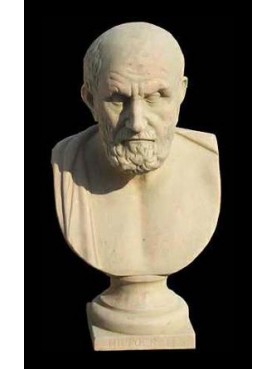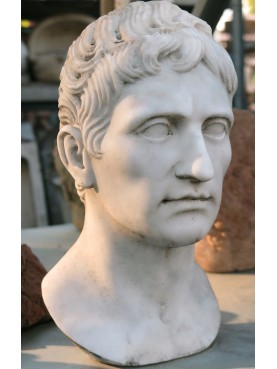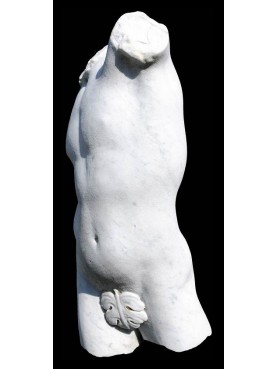Hadrian terracotta small bust roman emperor
Hadrian terracotta small bust roman emperor
15166
Original
Small bust of Hadrian (Emperor) inspired by the Tanagers.
Adrian
(Italica, Seville 76 - Baia 138)
Roman emperor (117-138)

Data sheet
| Height | 12.99 in | 33 cm |
| Width | 5.91 in | 15 cm |
| Depth | 5.91 in | 15 cm |
| Weight | 6.61 lbs | 3 Kg |
| Square base | 4.72 in X 4.72 in | 12 X 12 cm |
| Manufacturing | Toscana / from Tuscany | |
| Material | Terracotta |
More info
Hadrian (Latin: Publius Aelius Hadrianus Augustus; 24 January 76 – 10 July 138) was Roman emperor from 117 to 138. He is known for building Hadrian's Wall, which marked the northern limit of Britannia. He also rebuilt the Pantheon and constructed the Temple of Venus and Roma. Philhellene in most of his tastes, he is considered by some to have been a humanist, and he is regarded as the third of the Five Good Emperors.
Hadrian was born Publius Aelius Hadrianus into a Hispano-Roman family. Although Italica near Santiponce (in modern-day Spain) is often considered his birthplace, his actual place of birth remains uncertain. It is generally accepted that he came from a family with centuries-old roots in Hispania. His predecessor, Trajan, was a maternal cousin of Hadrian's father. Trajan did not designate an heir officially, but according to his wife Pompeia Plotina, he named Hadrian emperor immediately before his death. Trajan's wife and his friend Licinius Sura were well disposed towards Hadrian, and he may well have owed his succession to them.
During his reign, Hadrian travelled to nearly every province of the Empire. An ardent admirer of Greece, he sought to make Athens the cultural capital of the Empire and ordered the construction of many opulent temples in the city. He used his relationship with his Greek lover Antinous to underline his philhellenism, and this led to the establishment of one of the most popular cults of ancient times. Hadrian spent a great deal of time with the military; he usually wore military attire and even dined and slept among the soldiers. He ordered rigorous military training and drilling and made use of false reports of attacks to keep the army on alert.
On his accession to the throne, Hadrian withdrew from Trajan's conquests in Mesopotamia, Assyria and Armenia, and even considered abandoning Dacia. Late in his reign he suppressed the Bar Kokhba revolt in Judaea, renaming the province Syria Palaestina. In 138 Hadrian adopted Antoninus Pius on the condition that he adopt Marcus Aurelius and Lucius Verus as his own heirs. They would eventually succeed Antoninus as co-emperors. Hadrian died the same year at Baiae.
TANAGRA
Tanagra is a polychrome marble sculpture by the French artist Jean-Léon Gérôme, created in 1890. The sculpture is inspired by the polychrome statuettes found in the Greek city of Tanagra, in Boeotia. The work is now exhibited at the Musée d'Orsay, although much of the sculpture's polychromy has been lost over time.
In December 1870, in the archaeological site of Tanagra, Greece, terracotta statuettes from the Hellenistic age with traces of polychromy were found. This discovery confirmed the theory that ancient statues were colourful. These terracotta figures, which did not represent heroes or gods but ordinary people, were exhibited at the Paris Universal Exposition of 1878, where they enchanted and fascinated the public. Tanagra figurines became popular and were soon mentioned in some literary and theatrical works, such as in the novel The Picture of Dorian Gray and in the play An Ideal Husband by Oscar Wilde and in the novel In Search of Lost Time by Marcel Proust.
In his long career Gérôme was very often inspired by the classical world and he was fascinated by the terracotta figures of Tanagra and by the ancient inhabitants of the city who created them, to the point that he decided, at the age of 66, to sculpt a sculpture polychrome depicting the personification of fortune, or Tiche, of the city. Once finished, the work was exhibited at the 1890 Salon. Subsequently, the work was purchased by the French state and was exhibited in the Luxembourg museum,[4][5] and then exhibited in the Orsay museum.







